The question isn’t ‘Does the environment affect the way young children learn?” but ‘How does it affect the way they learn and what changes can we make to support their learning?’
The Early Years, the period from birth to five years old, is the age of discovery. The environment they inhabit is vitally important as it will affect a child’s learning and development whether it be their language, motor skills or the fundamentals of counting.
Creating a child-centred environment is key. This means looking at a room from a child’s perspective. Get down to their level and see the world through their eyes. Are activities and equipment accessible for them to select independently? It is vital that they can make their own choices and decisions to learn through play and creativity.
An Early Years setting is also a child’s first experience of independent living. This is where they take their first steps in looking after themselves and developing the motor skills for life and learning. Threading, lacing, buckling, zipping – we all need to learn to put on our own coat, do up our jeans, put on our shoes or open our school rucksack. Each cotton reel threaded, pasta necklace made, or zip done up strengthens the muscles in a child’s hand, which also prepares them for holding a pencil as they learn to write.
Resources should encourage even the youngest children to use all their senses. Children love to feel tactile natural objects with different surfaces, both rough and smooth. They like to collect and count items such as wood, bark, leaves, stones and shells; they drop them into water, instinctively counting in sequence, compare sizes, learn about floating and sinking. They learn the basics of maths without being aware of it.
The ideal Early Years setting will also mimic the outside world. A natural colour palette, that takes children beyond jarring primary colours to mimic the blues and greens of the outside world adds to a sense of calm and encourages children to look beyond their classroom walls and appreciate the outdoors.
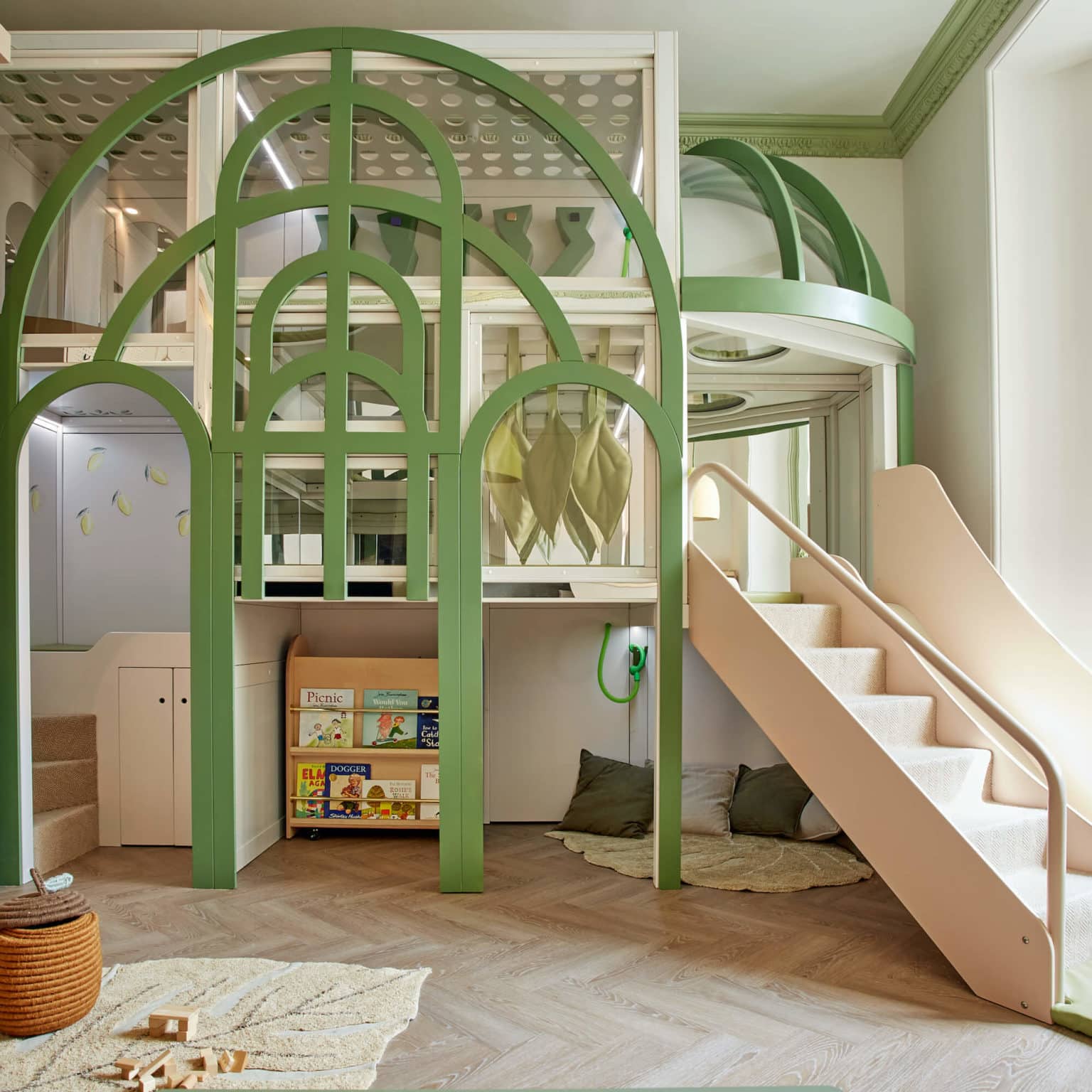
The new nursery at Eaton Square brings the outside in. The amazing setting, created by the family design studio House of Kin, is directly inspired by nature. The concept for the nurseries is taken from the Middle Ages when the Belgravia area was known as The Five Fields, a rural idyll of fields and country manors.
In keeping with all of House of Kin’s design, all furniture is natural wood, the colour palette of blues, greens and yellows, echoes nature’s own colours. A calm environment creates a calm atmosphere in which the children can create, explore, and play. The aim is to send each child on a journey of discovery through an English orchard; in one room children will explore an indoor treehouse – even the lights are giant apples and pears adorn the walls – and in the other they can experience the warmth and texture of a beehive.
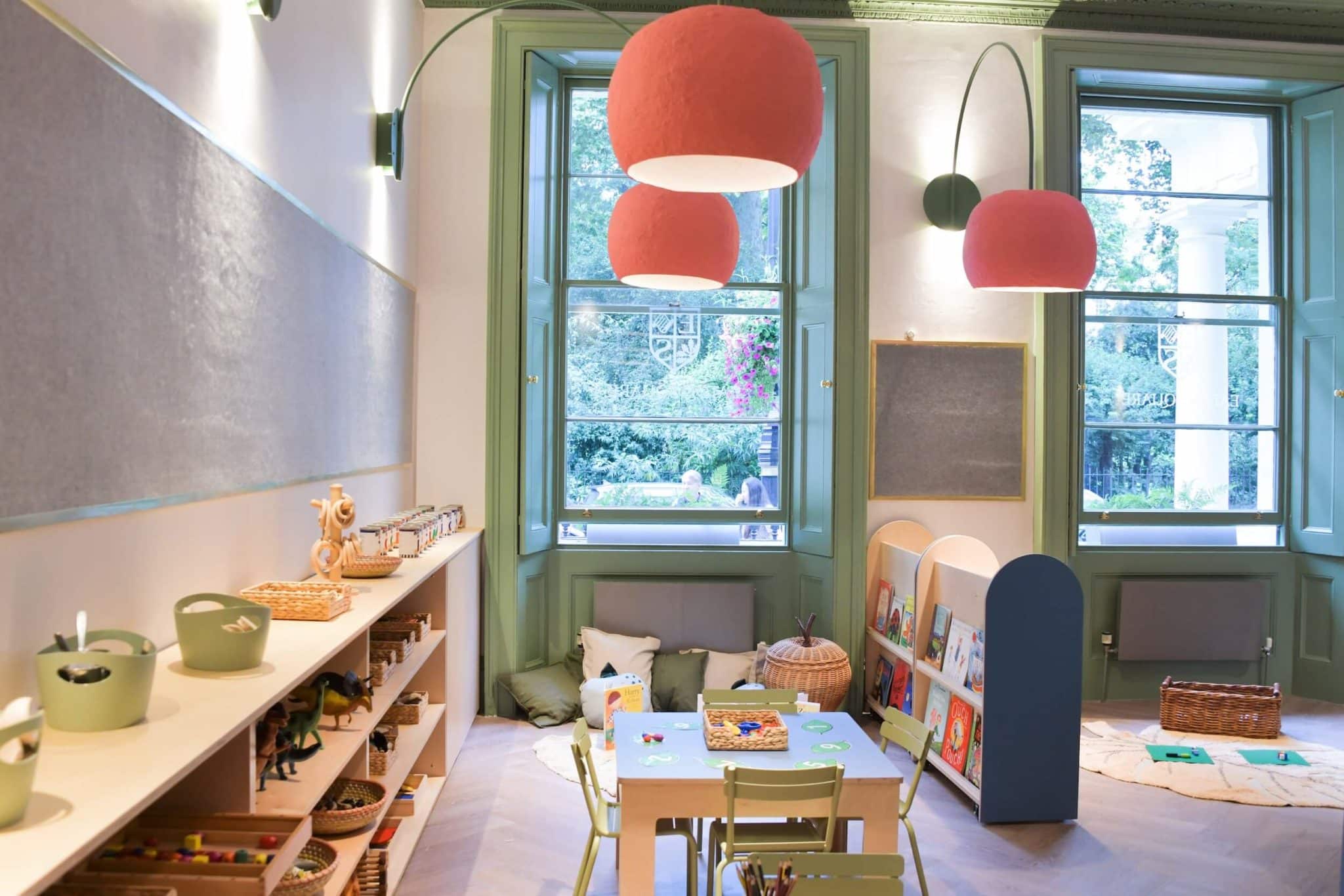
A range of beautifully created equipment and carefully curated activities have been incorporated into the role-play areas, to encourage the children to gain an awareness of space, a knowledge of positional numbers and an understanding of both space and shape. Montessori-inspired activities encourage number sequencing, practical life skills and phonic recognition. By incorporating this into a child’s play, a love of learning evolves.
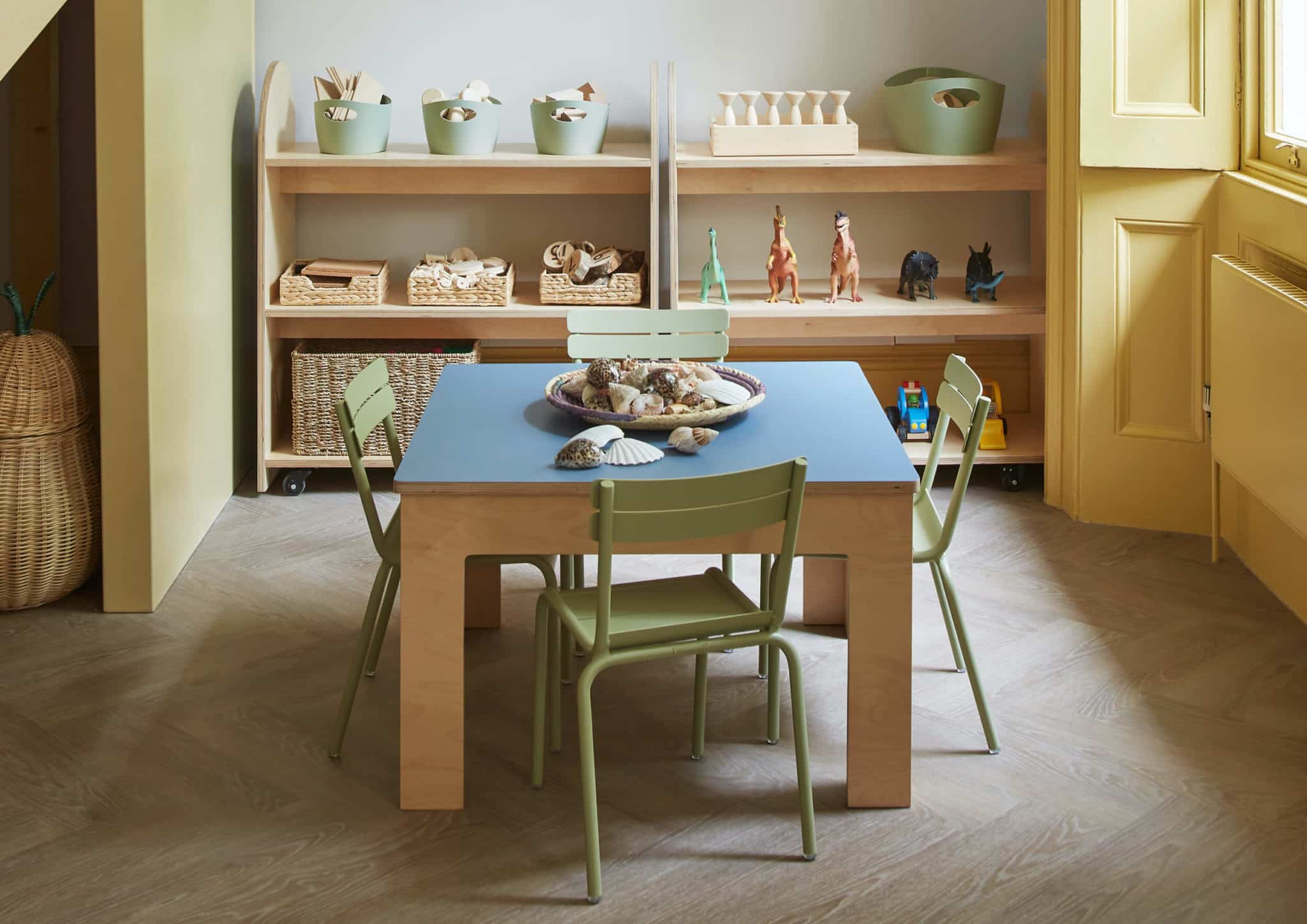
In the multi-storey Treehouse the children will have the opportunity to develop their counting skills. They can collect their own apples and then post them from the dovecote via a specially designed shoot, to a waiting friend at the bottom. The bright red apples can then be collected in a basket, counted to ensure that all 10 have been posted safely and then taken back to the top, where the process can start again.
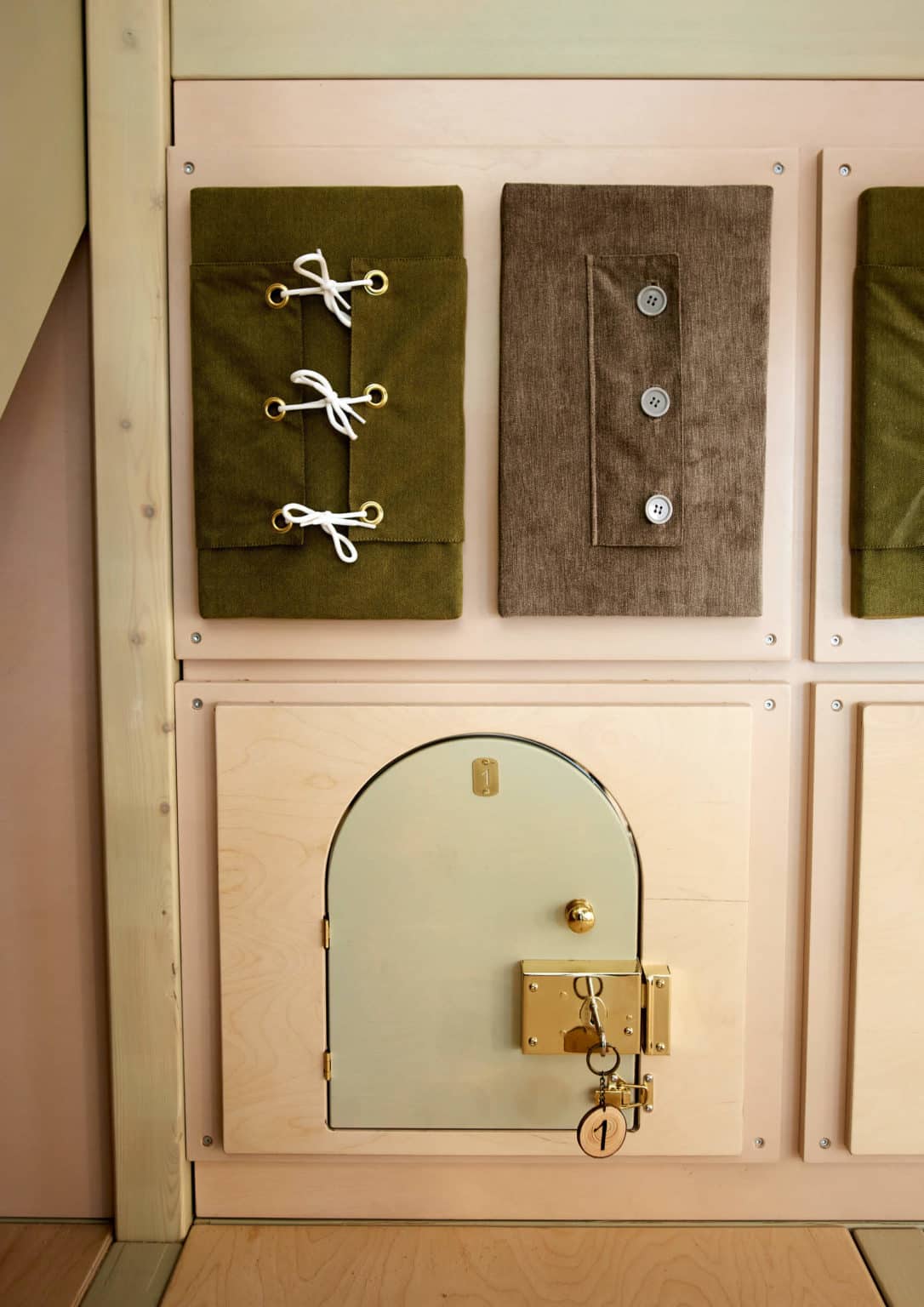
Activities in the Hive are phonics and shape based. Beautifully crafted wooden tiles adorn the walls of the first floor of the Hive and form part of a phonics matching activity for the children. Each tile needs to be matched and placed accordingly on the shelf, to encourage phonic recognition and even early blending of sounds.
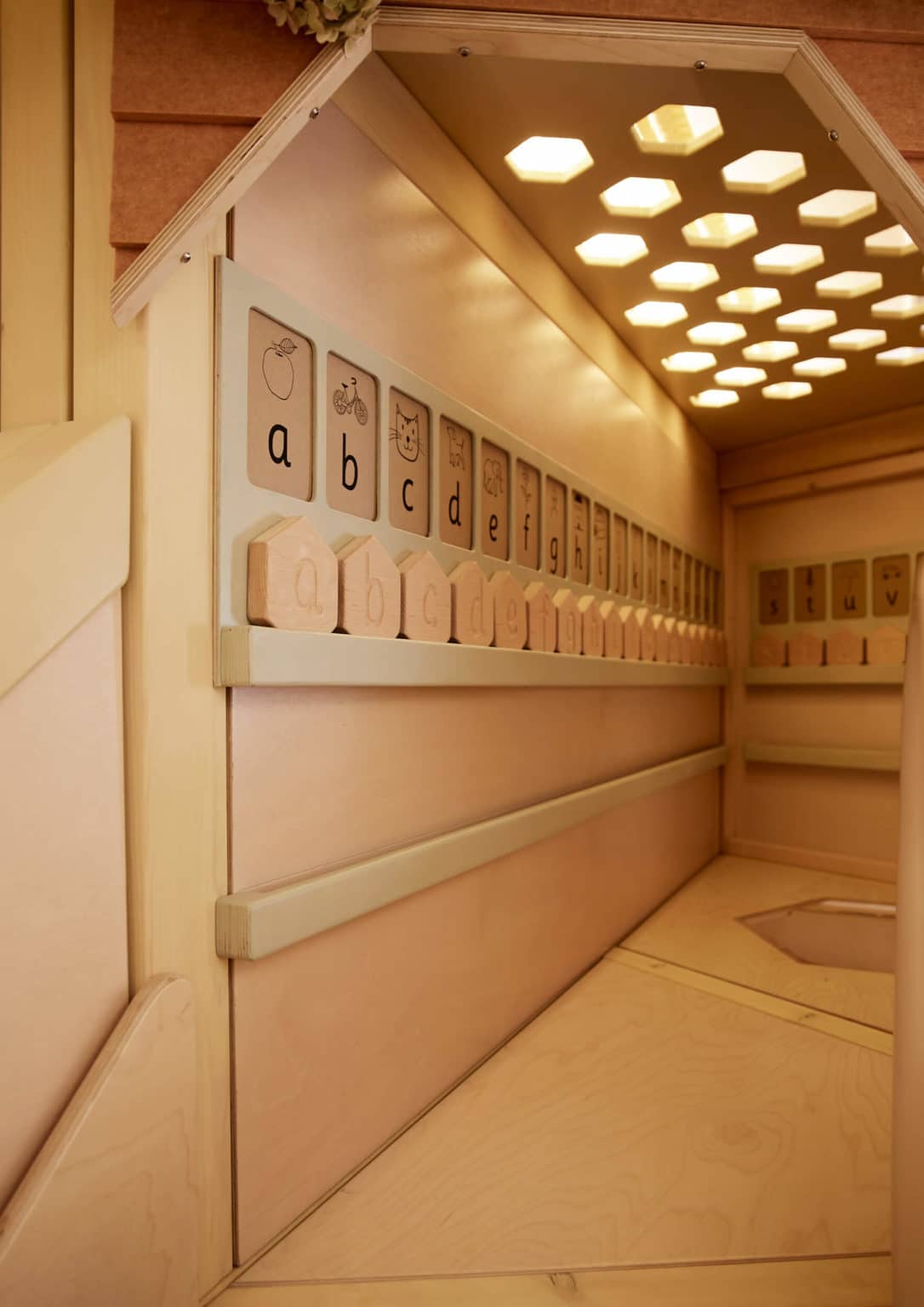
Hexagons are a real feature in the Hive – similar in design to the Montessori Knobbed Cylinders – each hexagon must fit into its corresponding hole. Every set is graded by height or size, which provides the children with an understanding of size comparison. They can ask one another, which is taller? Or which is larger?
And finally, an exciting pinball-style game allows the children to clamber to the top level and drop a ball into a shoot. The ball then ricochets down the shoot, avoiding various sticks which are attached to the wall, all the way to the ground level. The ball can be watched via Perspex windows – or even chased – all the way from top to bottom.
Eaton Square Nursery is the epitome of a child-centered environment with activities accessible for each and every pupil. With inspired design, Montessori-based activities, and carefully zoned areas there is something for every child to learn, develop and flourish.
You can visit Eaton Square Nursery Schools at their upcoming Open Mornings on Saturday 1st October or Wednesday 2nd November 2022. Book your place here.
PAID PARTNERSHIP




COMMENTS ARE OFF THIS POST